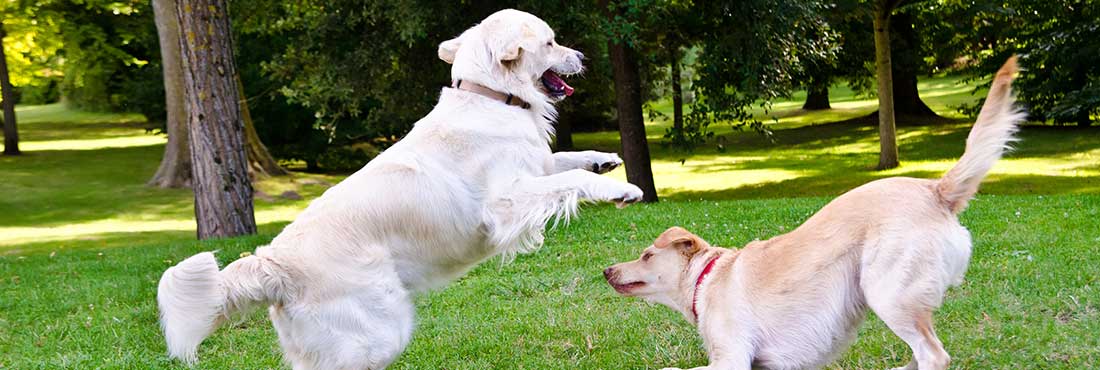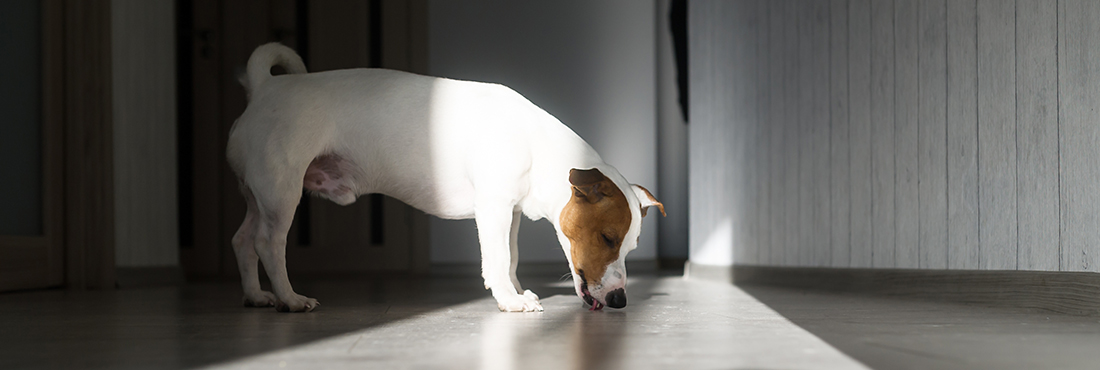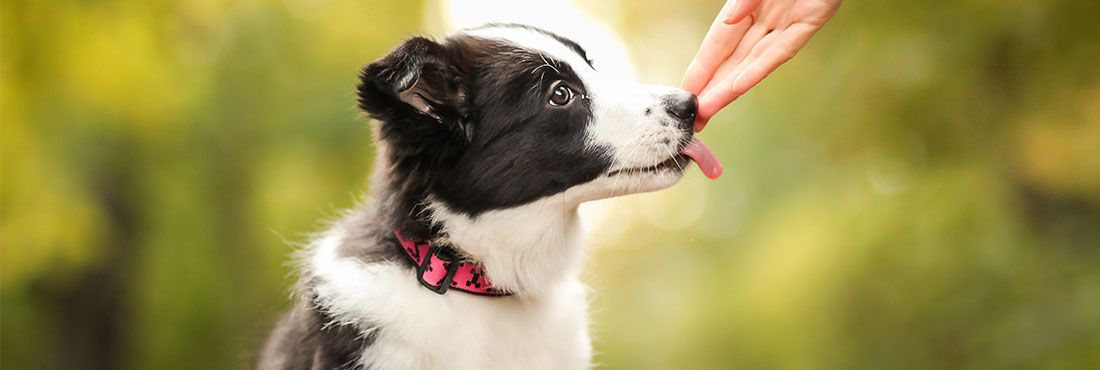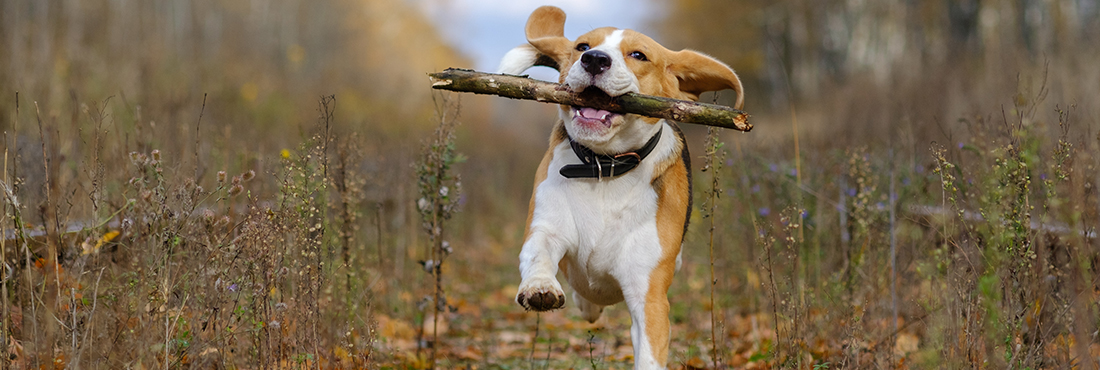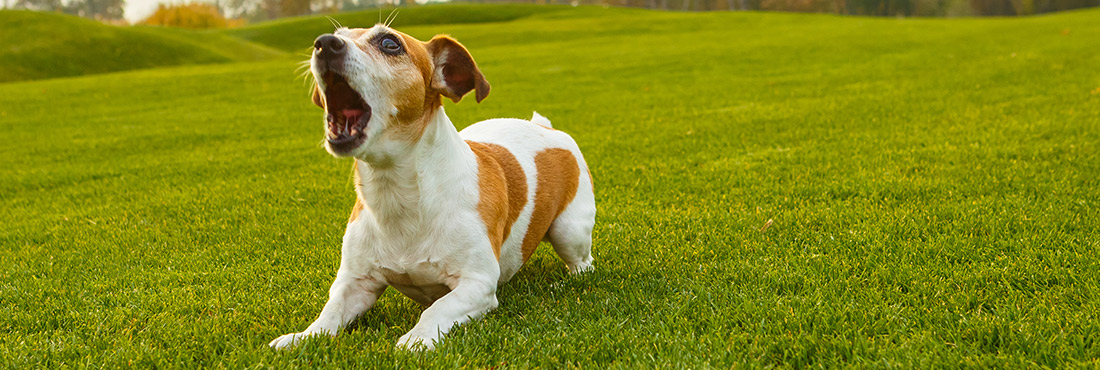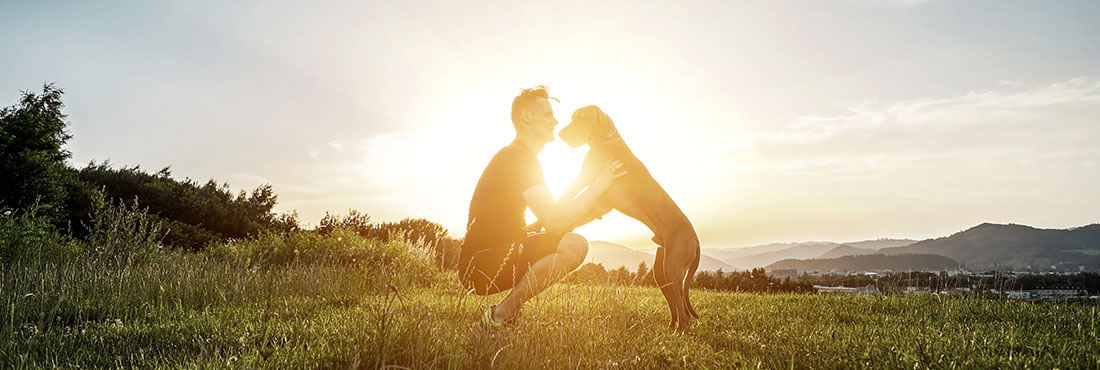Dog play fighting is completely common amongst our canine companions. This behavior is normal for all, if not most dogs, but you may wonder if you should interfere at a certain point.
Some behaviors such as bouncing, growling, and constant open mouths with goofy grins are normal, but what about body slamming, snarling, and lack of tail wagging? At what point does play fighting become rough? Read on to find out how you can determine whether your pooch is playing or fighting and how to prevent them from getting hurt.
Why Do Dogs Play Fight?
Dogs play fight for numerous reasons. To start, it’s actually a very common way for dogs to communicate and socialize. Many dogs can develop lasting friendships with other dogs after a play fight or two.
Moreover, play fighting is a fantastic way for dogs to release pent-up energy, which is why it sometimes looks a little intense. To some, it can be alarming to see dogs wrestling, but it’s a completely normal dog play behavior that they learn from the time they are puppies.
Dog Behavior
To better understand your dog’s motives when engaging in a scrap with another canine, look at their body language. Deciphering your dog’s body language can effectively tell you everything you need to know and whether you need to interfere or not when they are play fighting.
How to Tell When Playing Turns into Fighting
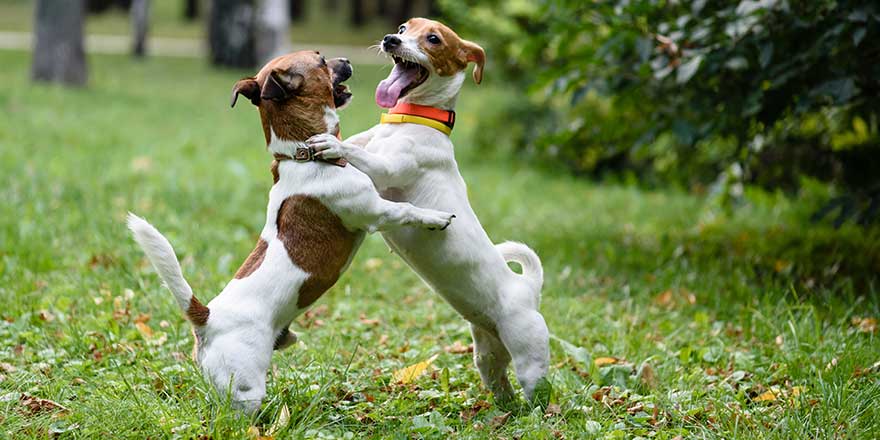
Dog play fighting can be adorable to watch, but how do you tell if it’s turned into real fighting? Typically, if the dogs in question are your furry friends, you will know instantly, but if you’ve taken your dog to the dog park and they are interacting with other canines, you may need to keep an eye out for the warning signs.
Why Can Play Fighting Turn Rough?
It’s rare, but some adult dogs use play fighting to assert dominance and become the top dog. Therefore play fighting can sometimes turn ugly and into real fighting. When dog play fighting turns into serious fighting, it can catch you off guard, but there are signals you can look out for, including:
- One dog doesn’t let the other dog disengage from play and keeps badgering them.
- Continuous growling that gets louder and more aggressive.
- Aggressive behavior/asserting dominance by humping or pinning the other dog down.
- Dogs seem more irritable and unable to pick up on normal canine social cues.
Dog play that turns into a real fight can often happen if a toy or treat is involved. Some dogs can be protective over their possessions, but they might become too protective, causing play to turn ugly.
So if you’re asking, ‘are my dogs fighting or playing?’, look at the lists below. Here you can find a list of behaviors that suggest you’re dogs are playing or fighting.
Positive Signs – No Need To Interfere
- One of the biggest play signals is the ‘play bow’. This is where their front legs are lowest to the ground, and their back end remains in the air. Dogs attempting to initiate play frequently slap their front paws down to provoke a wrestle.
- What usually accompanies the play bows are bouncing and inflated movements. In addition, vocal dogs may throw in an occasional bark or growl as if to say ‘c’mon, play with me!’ if they are not getting the response they are hoping for from the play bow.
- Dogs playing will usually have a particular expression on their face. This typically looks like an amused open-mouthed grin.
- Often, dogs will reassure playmates that scrapping is still a play fight. They will do this by flopping down and exposing their belly – they may even sneeze at times! If the other dog wants to continue, they will invite play once again by giving them the good old play bow.
- They will be taking turns chasing each other.
- Dog play fighting may not be over for long if they’re enjoying it. Although some dogs appear to have an unlimited energy source, they will inevitably get tired and take a break to catch their breath. Soon after, the fun will resume.
- The most tell-tale sign in the canine body language list encyclopedia is a wagging tail. Play fighting dogs will wag their tails frequently.
- Another thing to remember is that they will give the impression that they are biting each other, but this won’t be the case. The bites will be very gentle and won’t damage the skin.
- Dogs will take the time to get a good whiff of each other. When one dog refuses to let the other take a sniff, the playing is potentially over.
- Lastly, the play can sometimes go too far, and one will accidentally hurt the other, resulting in a yelp. Dogs that are playing will immediately stop before deciding whether to continue playing or not.
Negative Signs – Code Red
- Dogs will move in rigid and stiff motions instead of the playful bouncing mentioned above. When your dogs are stationary, they will also appear very stiff.
- Tucked tail.
- Ears will likely be flattened.
- They may growl, which will become a vicious snarl that gets louder.
- They will have a tightly closed mouth accompanied by a curled lip.
- If your dog has a long coat, you may notice the hair on the dog’s upper back will be raised.
- Occasionally, if your dog feels too threatened, it may snap its jaws at the other dogs. This may occur if they are not left alone and/or are antagonized.
- In most cases, a dog might try to avoid the other dog. This will accompany one or more of the other signs listed above.
Rough Play in Dogs
Some speculate that rough play fighting is an animals’ way to practice their combat skills, but there is no evidence to suggest this. Some dogs may play in a way that might cause concern, but it’s important to consider their existing bond. If two dogs have grown up together and are used to playing with one another, their play fighting might become a little bit rough, which is normal.
Preventing Dogs Fighting
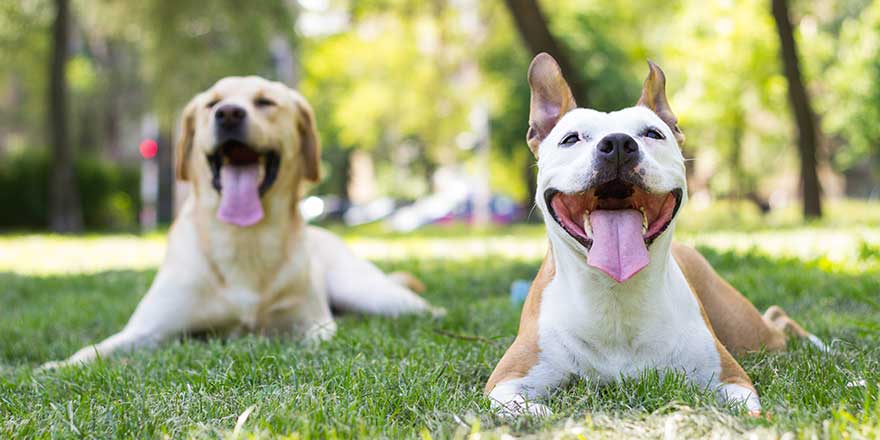
- The best way to prevent dog fights is by understanding the body language of canines.
- Ensuring you supervise dog play fighting is equally important to spot the warning signs early.
- If one dog is seemingly made anxious by another, keep them apart and even remove one from the area if they are particularly stressed.
- Puppies fighting isn’t something that you should be concerned about, but it’s crucial that you socialize them at a young age, so they learn more about canine social cues. Puppy kindergarten is a helpful option for brand new dog owners.
- Obedience training your dog is crucial. Not only can it help canines bond with their dog owners, but they will also learn to respond to your commands. If your dog is in danger of getting into a real fight, you can recall them easily before it can get out of hand.
- If things look as if they’re going south, stay calm and confident.
How to Break up a Dog Fight
Hopefully, you will never be in a position where you need to break up a dog fight. With the tips above, you should effectively be able to avoid any potential conflict when you start noticing troubling signs.
However, if you are concerned, there is nothing wrong with being prepared and having a plan. First, never attempt to break up a dog fight by physically touching or grabbing your dog or the other dog; this can result in getting bitten.
One of the most effective ways to have them scurry away is by making a loud noise. Get yourself an air horn that you can keep at hand if you’re out and about. You can also stop fights at home by banging pots and pans together or using a hose to spray them. You can also use a blanket to cover one of them or a broom or other large item (even a baby gate) to separate the two.
When You Have No Other Choice
If you absolutely have to physically separate them, you can use the wheelbarrow method as a last resort if there is more than one person around. This involves a person taking a dog each. You will have to grab their hind legs and lift them from behind. From here, you will need to walk backward and into an area where the dogs can no longer see each other. Alternatively, if it is still attached, grab the dog’s leash to pull them away from each other.
These options are often enough to make most canines snap out of their rage and/or give them the option to run away while separated. After successfully breaking up a dog fight, check them for any injuries.
Frequently Asked Questions
Research suggests that dogs social play as a way of communicating, burning energy, and attempting to form new relationships with other canines.
Yes but it's important that you supervise play times and look out for any signals that your canines are becoming irritable.
Puppies fight for the same reasons adult dogs play fight. It is a way to let off some steam and get to know their puppy pals.

